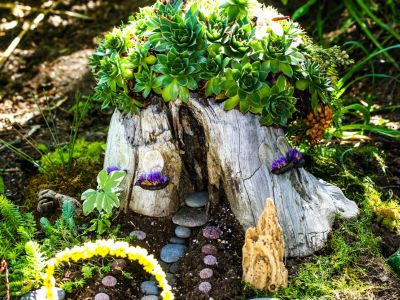Read on to learn about fairy gardening in the shade.
Fairy Gardening in the Shade
More and more people are living in condos, small bungalows, and even tiny houses. This means that their garden spaces are often equally tiny, perfect for a fairy garden, and some of these are in shade. Good news, though. Many of the miniature plants available are aptly suited for shady conditions, which mean finding shade plants for a fairy garden is not only simple but lots of fun. The same basic landscaping rules apply when fairy gardening in the shade. Include some plants with colorful foliage, some tall and some short plants, and a mix of textures.
Miniature Fairy Garden Shade Plants
As far as variety of color, you can’t go wrong with coleus and there are several miniature varieties available, such as ‘Sea Urchin Neon,’ ‘Bone Fish,’ ‘Sea Monkey Purple,’ and ‘Sea Monkey Rust.’ Incorporating an evergreen or two as shade plants for a fairy garden will give the garden year-round interest. ‘Twinkle Toe’ Japanese cedar and ‘Moon Frost’ Canada hemlock are excellent choices. Don’t forget the hostas when fairy gardening in the shade. There are so many varieties and hues available, such as ‘Cracker Crumbs’ and ‘Blue Elf.’ Grasses create movement in a garden. A couple of them make excellent shade plants for a fairy garden. A good choice is dwarf mondo grass. Ferns also create motion and are excellent for use in shade tolerant fairy gardens. Some ferns get quite large, but not ‘Rabbit’s Foot‘ or asparagus fern. Their diminutive size makes them perfect miniature shade plants for a fairy garden. Scottish moss is a chartreuse version of its kin, Irish moss plant, which grows into a grassy knoll perfect for a fairy picnic. As the “icing on the cake” so to speak, you may want to add in some vines. Miniature shade vines, such as dwarf wintercreeper or angel vine, look lovely twining in amongst the other fairy garden shade plants.
